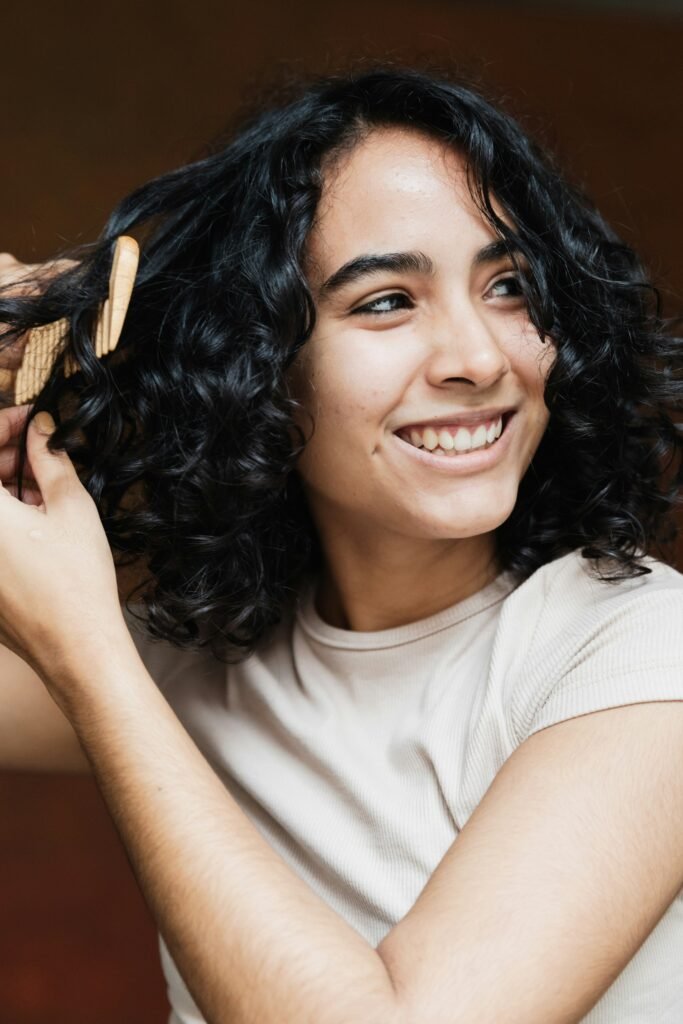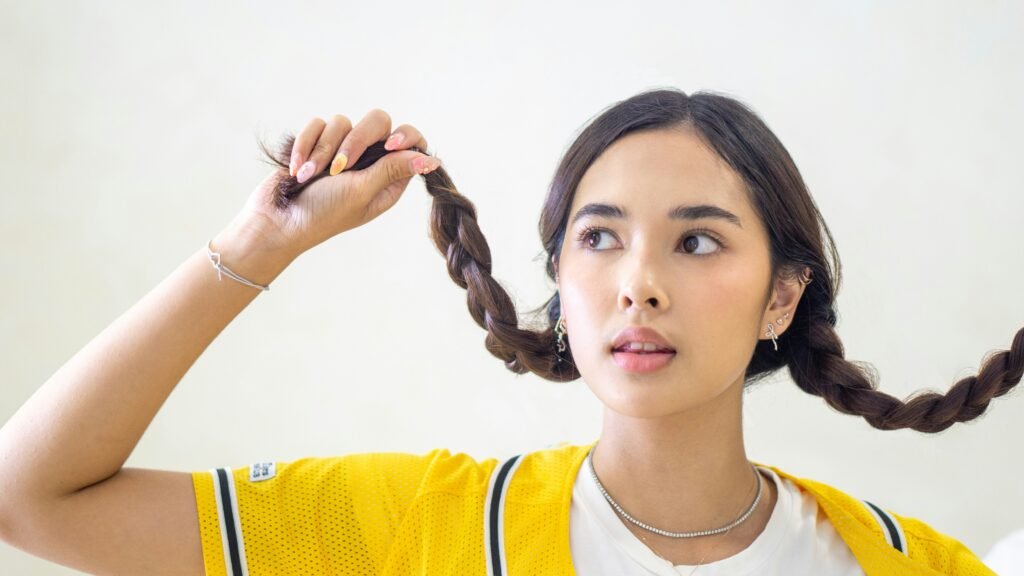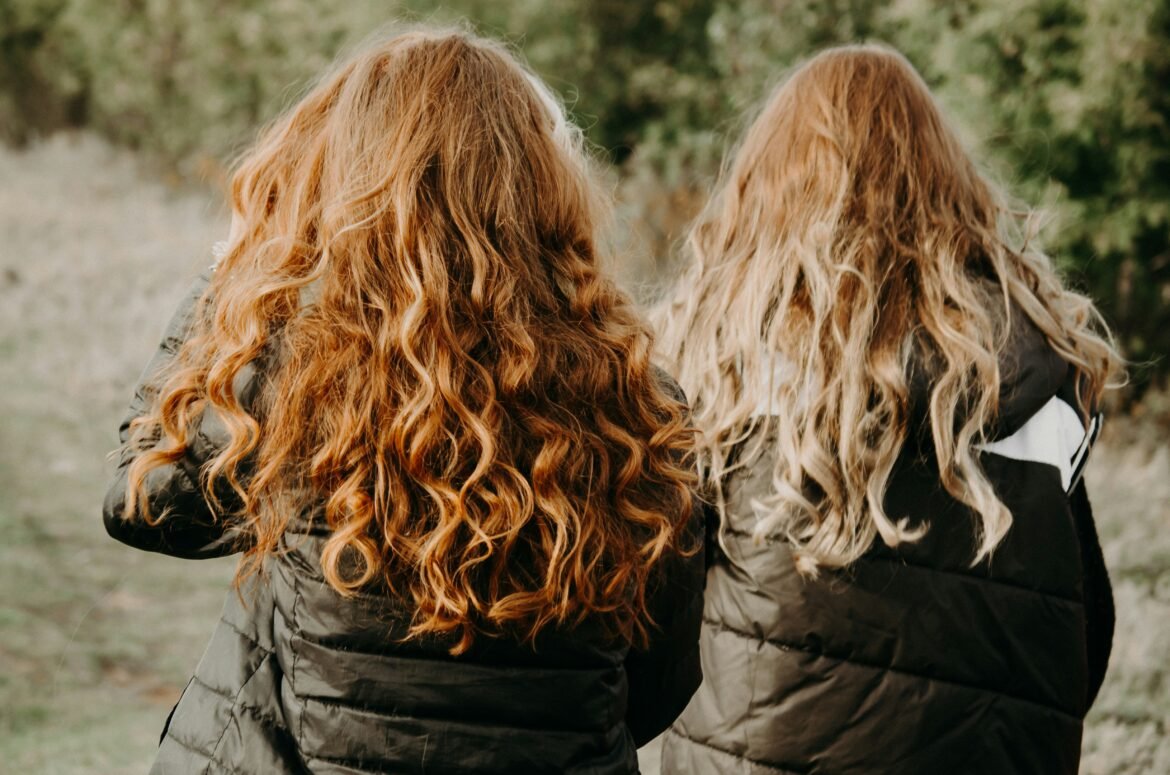Simple Hair Habits That Made a Big Difference
When I Finally Stopped Overcomplicating Hair Care
For years, I honestly believed that having “good hair” meant spending a fortune on salon products, following complicated routines, and dedicating way too much time with heat tools. My bathroom cabinet was overflowing with shampoos, serums, masks, and gadgets that promised miracles. And yet? My hair was always the same—frizzy at the ends, flat at the roots, and never quite how I wanted it.
One day I just got fed up. Instead of adding more, I decided to do less. I went back to basics and started focusing on simple, consistent habits. And that’s when everything changed. My hair didn’t just look healthier, it felt healthier—softer, shinier, and much easier to manage.
Here are the little things I changed that made the biggest difference.

1. Washing Less Often
I used to wash my hair every single day, thinking it would look greasy otherwise. The truth? I was making it worse. Over-washing stripped all the natural oils, which made my scalp overproduce oil. It was a vicious cycle. Now, I wash it only two or three times a week. The first week was rough (hello, dry shampoo), but once my scalp adjusted, my hair looked so much better.
2. Turning Down the Heat (Literally)
I loved my hot showers, but my hair didn’t. Washing with steaming water left my hair dry and my scalp irritated. Switching to lukewarm water was such a simple fix. And when I rinse with cool water at the end? Instant shine.
3. Using the Right Brush
For the longest time, I was guilty of using whatever cheap brush I had lying around. Big mistake. I finally invested in a wide-tooth comb for wet hair and a boar bristle brush for dry hair. The difference was crazy—less breakage, fewer tangles, and way more shine. Sometimes the tool matters more than the product.
4. Letting My Hair Air-Dry
I used to blow-dry my hair almost every morning because I thought it was faster. But all it did was fry my ends. Now I let my hair air-dry most of the time. If I do need the dryer, I wait until my hair is almost dry and then finish with low heat. My ends don’t split as fast, and my hair feels stronger overall.
5. Switching to a Silk Pillowcase
This one felt like a little luxury splurge, but it’s been totally worth it. Sleeping on a silk pillowcase means less friction, which means less frizz in the morning. I also started loosely braiding my hair before bed, and it’s been a game-changer—no tangles and soft waves when I wake up.
6. Getting Regular Trims
I used to avoid haircuts because I wanted my hair to grow longer. Spoiler: keeping split ends doesn’t make your hair look long—it just makes it look messy. Now I go for a trim every 8–10 weeks, and my hair actually grows healthier and looks fuller.
7. Taking Care of My Scalp
For the longest time, I ignored my scalp completely. Now I know that healthy hair starts there. Every time I shampoo, I take a few minutes to massage my scalp. Nothing fancy, just small circles with my fingertips. Sometimes I use a few drops of rosemary oil before washing. Not only does it feel amazing, but it’s also great for hair growth.
8. Being Kinder With Heat Stylin
Flat irons, curling wands, blow dryers—I used to use them daily. Now I only bring them out when I really want my hair styled. And when I do, I always use a heat protectant first. My ends no longer feel fried, and my hair has way fewer split ends.
9. Keeping My Products Simple
I used to layer so many products that my hair felt heavy and sticky. Now, I stick to the basics: a gentle shampoo, a good conditioner, a leave-in spray, and a light oil for the ends. That’s it. My hair feels lighter, cleaner, and honestly looks better than when I overloaded it with “miracle” products.
10. Paying Attention to Food and Water
This one surprised me the most. The more water I drink and the more balanced my meals are (especially protein and healthy fats), the better my hair looks. Avocados, nuts, eggs—those small choices really show up in the shine and strength of my hair. It’s a reminder that beauty isn’t just about what you put on your hair, but also what you put in your body.
Why These Simple Habits Work
None of these are revolutionary, but that’s the point. They work because they’re simple, consistent, and don’t overcomplicate things. Instead of fighting against my hair, I’m working with it. And instead of throwing money at the problem, I’m sticking to habits that are sustainable and realistic.
How to Make Them Stick
- Start with one or two habits and build from there.
- Be patient—healthy hair takes time.
- Make it easy: keep a wide-tooth comb in the shower, book trims in advance, set reminders if needed.
- Don’t copy someone else’s exact routine—listen to your hair and see what feels right.
Final Thoughts
I used to believe that good hair came from expensive products or complicated tricks. Now I know it’s about the small, consistent habits that protect and nourish your hair every day. If you’re feeling frustrated with your hair, try simplifying. Sometimes, the easiest changes are the ones that make the biggest difference.

Frequently Asked Questions For Simple Hair Habits
1. How long does it take to see results from these simple hair habits?
Most people notice improvements within 2-4 weeks, with significant changes appearing after 2-3 months as new, healthier hair grows in.
2. Is it really necessary to use a silk pillowcase?
While not absolutely necessary, silk or satin pillowcases reduce friction that causes breakage and frizz. An affordable alternative is a satin bonnet or scarf.
3. How often should I wash my hair for best results?
This varies by hair type and lifestyle. Generally, 2-3 times weekly works for most people, but adjust based on your scalp’s oil production and activity level.
4. Can these habits help with hair loss?
They can help reduce breakage and strengthen existing hair. For medical hair loss conditions, these habits work best as part of a treatment plan supervised by a dermatologist.
5. Do I need to give up heat styling completely?
No, but reducing frequency, using heat protectants, and keeping tools at lower temperatures will significantly improve hair health over time.
6. What’s the most important habit for improving hair health?
Gentle detangling and mechanical care (avoiding rough handling) often makes the biggest difference by preventing damage before it occurs.
7. Are expensive shampoos and conditioners worth it?
Not necessarily. Focus on ingredient quality rather than price. Many affordable products without harsh sulfates and with moisturizing ingredients work excellently.
8. How important is diet for hair health?
Very important—hair needs proper nutrition to grow strong. Adequate protein, iron, omega-3 fatty acids, and vitamins (particularly B vitamins) support healthy hair growth.
9. Can these habits help with dandruff?
Gentle scalp massage and appropriate washing frequency can help, but persistent dandruff may require specialized anti-fungal products or medical treatment.
10. Is it better to brush hair when wet or dry?
Generally, hair is most vulnerable when wet. Using a wide-tooth comb on wet hair and brushing when mostly or completely dry reduces breakage.
11. How can I protect my hair while exercising?
Use loose, secure styles that don’t pull tightly. Protect hair from sweat damage by washing or at least rinsing after intense workouts.
12. Do natural oils like coconut or argan oil really help hair?
Yes, for most hair types. They can provide moisture, protection, and nutrients, but use sparingly to avoid weighing hair down or causing buildup.

